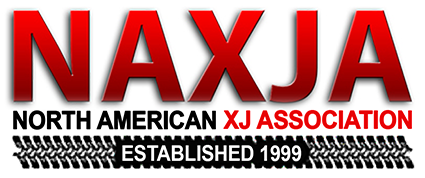- Location
- Desert Beach So Cal
Implementation of Off Highway Vehicle (OHV) Management, Upper Columbia-Salmon Clearwater District, ID
http://a257.g.akamaitech.net/7/257/2422/14mar20010800/edocket.access.gpo.gov/2003/03-7163.htm
[Federal Register: March 26, 2003 (Volume 68, Number
58)]
Implementation of Off Highway Vehicle (OHV)
Management, Upper Columbia-Salmon Clearwater District,
ID
SUMMARY: In a Federal Register notice dated February
25, 2000, the
Salmon Field Office notified the public of the BLM's
intent to amend
the Lemhi Resource Management Plan (RMP) (BLM 1987) to
address several
management concerns, including the need for
Aadditional guidance for
management of resources, values, and uses on public
lands within the
(Lewis and Clark National Historic) Trail corridor and
its surrounding
area, and for other areas where visitor use is
increasing
substantially.'' This concern has been addressed
through amended off-
highway vehicle use (OHV) designations for the
approximately 594,837-
acre Salmon Field Office area, as well as other
management decisions.
The Lemhi RMP amendment was approved by the Idaho
State Director on
August 29, 2001. As stated in 43 CFR 8342.2(b), that
approval
constituted the formal designation of off-highway
vehicle use areas for
the Salmon Field Office area. This Notice is published
in compliance
with 43 CFR 8364.1 Closure and restriction orders.
Additional efforts
to inform the public of the changes in OHV
designations will be made
during the next six to twelve months as the Salmon
Field Office holds informational meetings, prepares
and distributes a
Travel Map, installs signs identifying the restricted
or closed areas,
and contacts public land visitors via the media and in
the field.
Changes in OHV designations were primarily made to
address existing
or potential future impacts to cultural, historic, and
scenic
resources; fisheries and wildlife habitat; undeveloped
and non-
motorized recreational opportunities; and native
vegetation in the
Salmon Field Office area. These designations were
developed based on
public and tribal input and an environmental analysis
of various
management alternatives. This closure and restriction
order supersedes
the OHV designation and closure notices published in
the Federal
Register by the Salmon District Office on September 5,
1986; September
29, 1987; and April 24, 1989.
The majority (about 96.5%) of public lands
administered by the Salmon Field Office now have an
OHV designation of
``limited,'' which means that motorized vehicle travel
within specified
areas and/or on designated routes, roads, vehicle
ways, or trails is
subject to restrictions. The remaining public lands
(approximately
3.5%) are designated ``closed''; i.e., motorized
vehicle travel is
prohibited in those areas.
http://a257.g.akamaitech.net/7/257/2422/14mar20010800/edocket.access.gpo.gov/2003/03-7163.htm
[Federal Register: March 26, 2003 (Volume 68, Number
58)]
Implementation of Off Highway Vehicle (OHV)
Management, Upper Columbia-Salmon Clearwater District,
ID
SUMMARY: In a Federal Register notice dated February
25, 2000, the
Salmon Field Office notified the public of the BLM's
intent to amend
the Lemhi Resource Management Plan (RMP) (BLM 1987) to
address several
management concerns, including the need for
Aadditional guidance for
management of resources, values, and uses on public
lands within the
(Lewis and Clark National Historic) Trail corridor and
its surrounding
area, and for other areas where visitor use is
increasing
substantially.'' This concern has been addressed
through amended off-
highway vehicle use (OHV) designations for the
approximately 594,837-
acre Salmon Field Office area, as well as other
management decisions.
The Lemhi RMP amendment was approved by the Idaho
State Director on
August 29, 2001. As stated in 43 CFR 8342.2(b), that
approval
constituted the formal designation of off-highway
vehicle use areas for
the Salmon Field Office area. This Notice is published
in compliance
with 43 CFR 8364.1 Closure and restriction orders.
Additional efforts
to inform the public of the changes in OHV
designations will be made
during the next six to twelve months as the Salmon
Field Office holds informational meetings, prepares
and distributes a
Travel Map, installs signs identifying the restricted
or closed areas,
and contacts public land visitors via the media and in
the field.
Changes in OHV designations were primarily made to
address existing
or potential future impacts to cultural, historic, and
scenic
resources; fisheries and wildlife habitat; undeveloped
and non-
motorized recreational opportunities; and native
vegetation in the
Salmon Field Office area. These designations were
developed based on
public and tribal input and an environmental analysis
of various
management alternatives. This closure and restriction
order supersedes
the OHV designation and closure notices published in
the Federal
Register by the Salmon District Office on September 5,
1986; September
29, 1987; and April 24, 1989.
The majority (about 96.5%) of public lands
administered by the Salmon Field Office now have an
OHV designation of
``limited,'' which means that motorized vehicle travel
within specified
areas and/or on designated routes, roads, vehicle
ways, or trails is
subject to restrictions. The remaining public lands
(approximately
3.5%) are designated ``closed''; i.e., motorized
vehicle travel is
prohibited in those areas.
